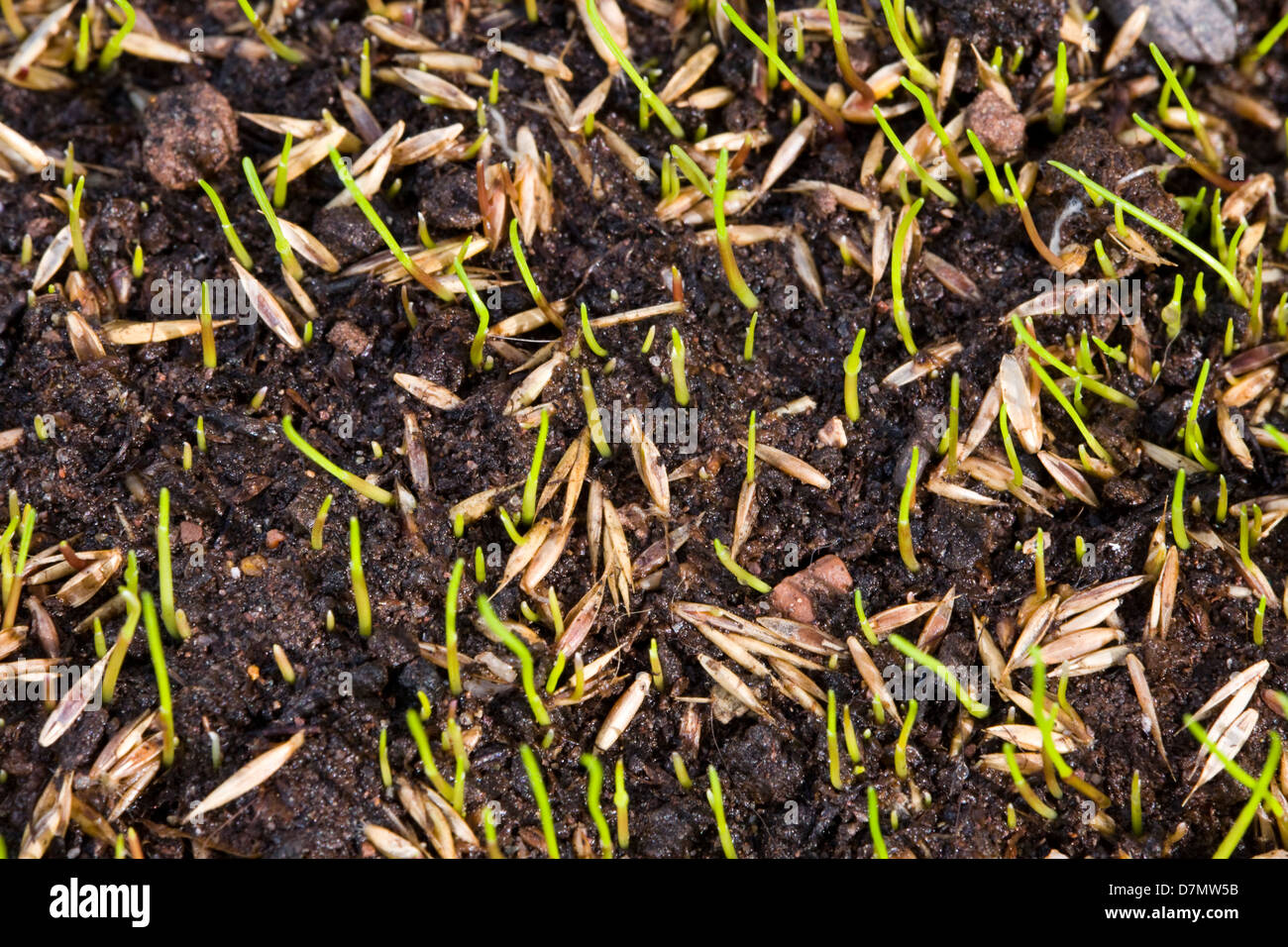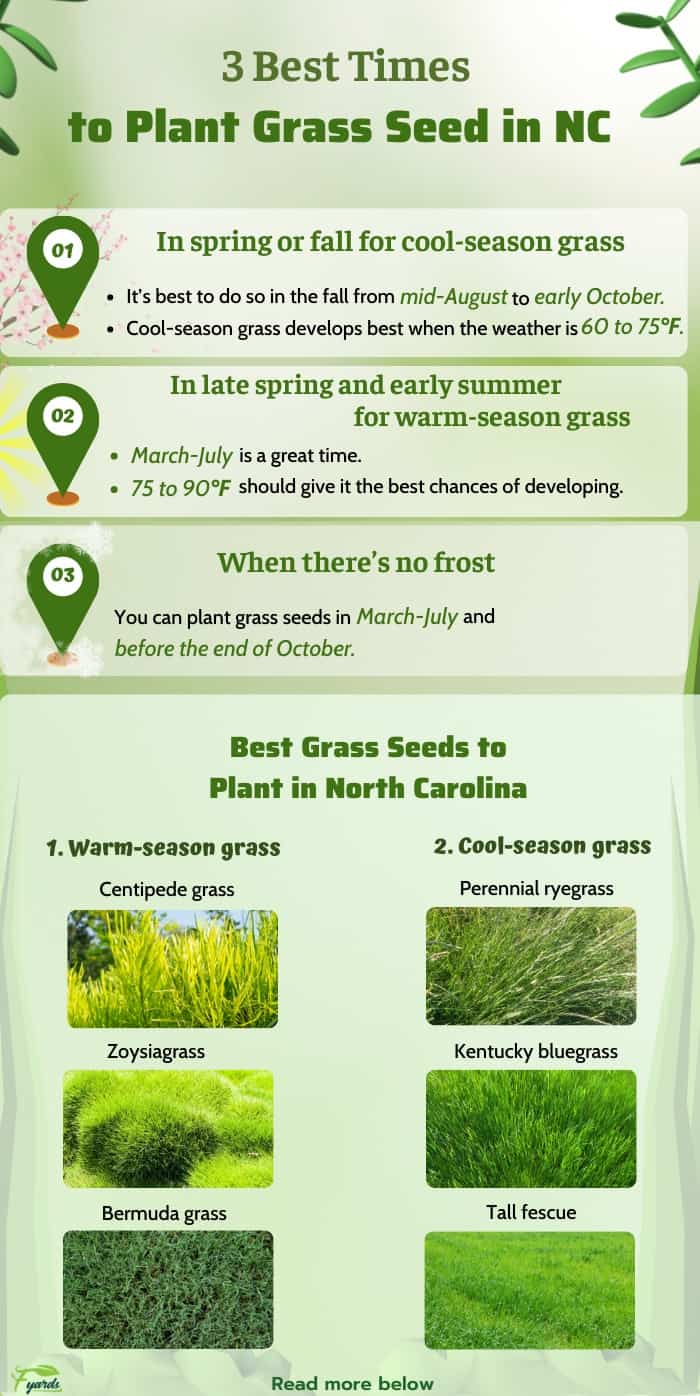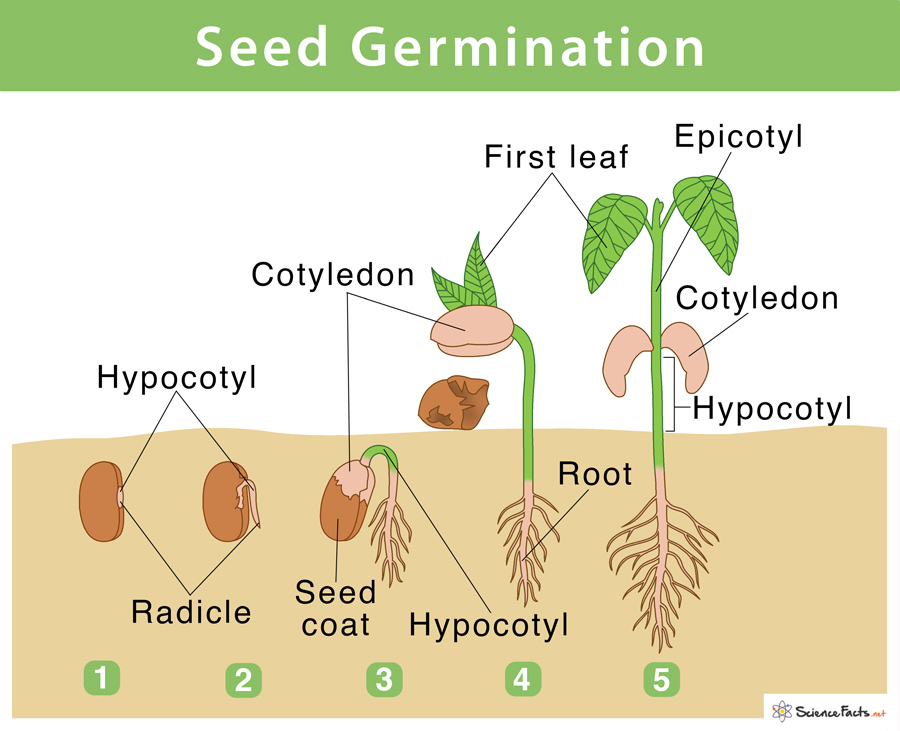Understanding the Germination Process: What to Expect in the First Two Weeks
The germination process is a critical stage in the growth of grass seed. During this period, the seed absorbs water, breaks its dormancy, and begins to sprout. Understanding the factors that affect seed germination is essential to ensure successful growth. Soil temperature, moisture, and light are the primary factors that influence germination. Optimal soil temperature for germination varies depending on the type of grass seed, but most species germinate best in temperatures between 50°F and 90°F (10°C and 32°C).
Soil moisture is also crucial for germination. The soil should be consistently moist but not waterlogged, as excess water can lead to rot and poor germination. Light is another essential factor, as most grass species require adequate light to germinate. However, some species, such as ryegrass, can germinate in partial shade.
During the first two weeks after sowing grass seed, it’s essential to maintain optimal conditions for germination. This includes keeping the soil consistently moist, providing adequate light, and maintaining optimal soil temperature. It’s also crucial to avoid overwatering, as this can lead to poor germination and increased risk of disease.
After 7-10 days, the seeds will start to germinate, and the first signs of growth will appear. The seedlings will emerge as a small white root and a green leaf. During this stage, it’s essential to maintain optimal growing conditions to ensure the seedlings establish a strong root system and develop into healthy plants.
Germination grass seed after 2 weeks is a critical milestone in the growth process. By understanding the factors that affect germination and maintaining optimal conditions, you can ensure successful growth and a healthy, thriving lawn. Regular monitoring and maintenance during this period will also help prevent common mistakes that can hinder germination, such as overwatering and underwatering.
Preparing the Perfect Soil: Tips for Optimal Germination Conditions
Soil preparation is a critical step in ensuring successful germination of grass seed. The quality of the soil can significantly impact the germination rate, seedling establishment, and overall health of the lawn. To prepare the perfect soil for optimal germination conditions, it’s essential to conduct a soil test to determine the pH level and nutrient content.
The ideal pH range for most grass species is between 6.0 and 7.0. If the soil pH is too high or too low, it can affect the availability of essential nutrients for the seedlings. Based on the soil test results, adjust the pH level by adding lime to raise the pH or sulfur to lower it. Additionally, apply fertilizers to provide the necessary nutrients for seedling growth.
Another crucial aspect of soil preparation is to ensure good drainage and aeration. Compact or waterlogged soil can hinder germination and seedling establishment. To improve soil structure, add organic matter such as compost or well-rotted manure. This will help to increase the soil’s water-holding capacity, improve drainage, and provide a favorable environment for seed germination.
In addition to soil testing and pH adjustment, it’s essential to remove any debris, rocks, or weeds that can compete with the seedlings for water and nutrients. Till the soil to a depth of 8-10 inches to loosen and aerate it, and then rake the soil to create a smooth, even surface.
Proper soil preparation is critical for successful germination of grass seed. By conducting a soil test, adjusting the pH level, and providing the necessary nutrients, you can create an optimal environment for seed germination and establishment. This will help to ensure a healthy and thriving lawn, and set the stage for successful germination of grass seed after 2 weeks.
How to Sow Grass Seed for Maximum Germination Rates
Sowing grass seed is a critical step in the germination process. To achieve maximum germination rates, it’s essential to follow proper sowing techniques. The first step is to determine the correct seeding rate for your specific grass seed variety. The seeding rate will depend on the type of grass, the climate, and the soil type. A general rule of thumb is to sow 1-2 pounds of grass seed per 1,000 square feet of lawn.
Next, prepare the soil by loosening it to a depth of 8-10 inches. This will help to ensure good contact between the seed and the soil. Then, spread the grass seed evenly over the lawn using a spreader or by hand. Make sure to follow the manufacturer’s instructions for the spreader to ensure accurate application.
After spreading the seed, rake the soil gently to a depth of about 1/4 inch. This will help to cover the seed and ensure good contact with the soil. Finally, water the lawn lightly but thoroughly to settle the seed and provide enough moisture for germination.
The depth and spacing of the seed are also critical factors in achieving maximum germination rates. The seed should be sown at a depth of about 1/4 inch, and the spacing should be about 1-2 inches apart. This will help to prevent overcrowding and ensure that each seed has enough room to germinate and grow.
Proper sowing techniques are essential for achieving maximum germination rates. By following these steps, you can help to ensure that your grass seed germinates successfully and grows into a healthy and thriving lawn. Remember to also provide optimal conditions for germination, including adequate moisture, light, and temperature, to help your grass seed germinate after 2 weeks.
Watering and Maintaining Your Lawn: The First Two Weeks
Proper watering and maintenance are crucial during the first two weeks after sowing grass seed. This critical period requires careful attention to ensure successful germination and establishment of the seedlings. Watering is one of the most important factors to consider during this time.
Water the lawn lightly but thoroughly after sowing the grass seed. Keep the soil consistently moist but not waterlogged. Overwatering can lead to poor germination, while underwatering can cause the seedlings to dry out. Aim to provide about 1-2 inches of water per week, either from rainfall or irrigation.
In addition to watering, maintain the lawn by controlling weeds and keeping the soil surface smooth. Weeds can compete with the seedlings for water and nutrients, so it’s essential to remove them regularly. Use a hoe or hand weeder to remove weeds, taking care not to damage the seedlings.
Mowing is also an important aspect of lawn maintenance during the first two weeks. Keep the mower blade at a height of 2-3 inches to avoid damaging the seedlings. Mow the lawn when the grass reaches a height of 3-4 inches, but avoid mowing too frequently, as this can stress the seedlings.
Regular monitoring of the lawn is also essential during this period. Check the lawn daily for signs of germination, such as tiny white roots and green shoots. Also, watch for pests and diseases, such as aphids, whiteflies, and fungal infections, and take action promptly if you notice any problems.
By following these watering and maintenance tips, you can help ensure successful germination and establishment of your grass seed. Remember to provide optimal conditions for germination, including adequate moisture, light, and temperature, to help your grass seed germinate after 2 weeks.
Common Mistakes to Avoid During the Germination Process
While germinating grass seed can be a straightforward process, there are several common mistakes that can hinder germination and lead to poor results. One of the most common mistakes is overwatering, which can cause the seeds to rot and prevent germination. On the other hand, underwatering can also be detrimental, as seeds need consistent moisture to germinate.
Inadequate soil preparation is another common mistake that can affect germination. If the soil is not properly prepared, it can lack the necessary nutrients and pH balance for optimal germination. Additionally, compacted soil can prevent seeds from germinating, as it can limit the amount of oxygen and water that reaches the seeds.
Incorrect sowing techniques can also hinder germination. Sowing seeds too deeply or too shallowly can prevent them from germinating, as can sowing them too close together. It’s essential to follow the recommended sowing depth and spacing for the specific grass seed variety being used.
Another common mistake is not providing enough light for germination. Most grass seed varieties require adequate light to germinate, so it’s essential to ensure that the area is receiving sufficient sunlight. If the area is too shaded, it may be necessary to use grow lights to supplement the natural light.
Finally, not monitoring the soil temperature can also affect germination. Most grass seed varieties have an optimal soil temperature range for germination, and if the soil is too hot or too cold, it can prevent germination. It’s essential to monitor the soil temperature and adjust the sowing time accordingly.
By avoiding these common mistakes, you can help ensure successful germination of your grass seed. Remember to provide optimal conditions for germination, including adequate moisture, light, and temperature, to help your grass seed germinate after 2 weeks.
Grass Seed Varieties: Choosing the Best Option for Your Lawn
With so many different types of grass seed varieties available, choosing the right one for your lawn can be a daunting task. However, by understanding the characteristics, advantages, and disadvantages of each variety, you can make an informed decision and select the best option for your specific climate, soil type, and intended use.
One of the most popular grass seed varieties is Kentucky bluegrass. This variety is known for its dark green color, fine texture, and ability to tolerate shade and drought. However, it can be sensitive to extreme temperatures and may require more maintenance than other varieties.
Another popular variety is perennial ryegrass. This variety is known for its fast establishment rate, fine texture, and ability to tolerate heavy foot traffic. However, it can be sensitive to heat and drought, and may require more frequent watering.
Tall fescue is a popular variety for lawns in cooler climates. This variety is known for its deep green color, coarse texture, and ability to tolerate shade and drought. However, it can be sensitive to extreme temperatures and may require more maintenance than other varieties.
Bermudagrass is a popular variety for lawns in warmer climates. This variety is known for its fine texture, drought tolerance, and ability to withstand heavy foot traffic. However, it can be sensitive to shade and may require more frequent mowing.
When choosing a grass seed variety, it’s essential to consider factors such as climate, soil type, and intended use. By selecting the right variety for your specific needs, you can ensure a healthy and thriving lawn that will provide years of enjoyment.
In addition to considering the characteristics of each variety, it’s also essential to consider the specific growing conditions of your lawn. This includes factors such as sunlight, soil pH, and moisture levels. By understanding these factors, you can select a variety that is well-suited to your specific growing conditions and ensure successful germination of your grass seed after 2 weeks.
Monitoring Progress: How to Check for Germination
Monitoring progress and checking for germination is a crucial step in ensuring successful germination of grass seed. By regularly checking the soil and seedlings, you can identify any potential issues and take corrective action to ensure optimal germination.
One of the first signs of germination is the appearance of tiny white roots and green shoots. These can be seen emerging from the soil within 7-10 days of sowing the grass seed. As the seedlings grow, they will begin to develop their first set of leaves, which will be small and delicate.
To check for germination, gently remove a small amount of soil from the surface of the lawn. Look for the tiny white roots and green shoots, and check for any signs of growth or development. You can also use a magnifying glass or a handheld lens to get a closer look at the seedlings.
In addition to checking for visual signs of germination, you can also use tools such as a soil thermometer to monitor the soil temperature. Most grass seed varieties germinate best in soil temperatures between 50°F and 90°F (10°C and 32°C).
Regular monitoring of the lawn is essential to ensure successful germination. By checking for signs of germination and monitoring the soil temperature, you can identify any potential issues and take corrective action to ensure optimal germination. This will help to ensure that your grass seed germinates successfully after 2 weeks and develops into a healthy and thriving lawn.
It’s also important to keep in mind that germination rates can vary depending on factors such as soil quality, moisture levels, and temperature. By monitoring progress and adjusting your care routine as needed, you can help to optimize germination rates and ensure a successful lawn.
What to Expect After Germination: The Next Steps in Lawn Care
After germination, the next steps in lawn care are crucial to maintaining a healthy and thriving lawn. During this period, the seedlings will begin to develop their root systems and grow their first set of leaves. It’s essential to provide the necessary care and maintenance to ensure optimal growth and development.
Fertilization is an essential step in lawn care after germination. A balanced fertilizer will provide the necessary nutrients for the seedlings to grow and develop. It’s recommended to apply a starter fertilizer, which is specifically designed for new lawns, at the recommended rate.
Mowing is another critical step in lawn care after germination. It’s essential to maintain the recommended mowing height for the specific grass seed variety. Mowing too low can stress the seedlings, while mowing too high can lead to weed growth and other issues.
Pest control is also an essential step in lawn care after germination. Keep an eye out for common pests such as white grubs, chinch bugs, and billbugs. Use organic or chemical controls as needed to prevent infestations and maintain a healthy lawn.
In addition to fertilization, mowing, and pest control, it’s essential to maintain proper watering and maintenance habits. Continue to water the lawn deeply but infrequently to encourage deep root growth. Also, maintain a regular mowing schedule and control weeds as needed.
By following these steps, you can ensure a healthy and thriving lawn after germination. Remember to provide optimal conditions for growth and development, including adequate moisture, light, and nutrients, to help your grass seed grow into a lush and vibrant lawn.
After the first two weeks, you can expect your lawn to start looking like a lush and vibrant carpet of grass. With proper care and maintenance, your lawn will continue to grow and thrive, providing a beautiful and functional outdoor space for years to come.









